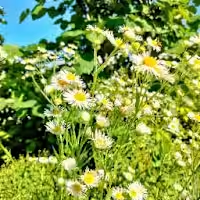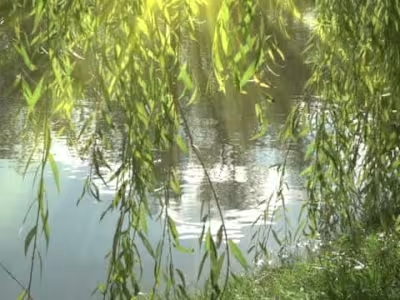What Type of Succulent is Right for You?
1185 words / 6627 characters
What Type of Succulent is Right for You?

Photo by Nika_Akin on Pixabay
When it comes to choosing the right succulent for your needs, it's important to
understand the different types and their specific requirements. Succulents are
known for their ability to store water in their leaves, stems, and roots, making them
perfect for low-water environments. In this article, we will explore the needs of
various succulent genera and help you find the perfect match for your indoor or
outdoor space.

1. Indoor Succulents: Haworthia
If you're looking to add some greenery to your indoor space, Haworthia is a great
place to start. These succulents thrive in low to bright indirect light and prefer
cooler temperatures. Haworthia plants are known for their unique rosette-shaped
leaves that come in various patterns and textures. They are relatively
low-maintenance and can tolerate periods of neglect, making them perfect for
beginners or those with busy lifestyles.
2. Snow-Loving Outdoor Succulents: Sempervivum
For those living in colder climates with harsh winters, Sempervivum, also known
as "hens and chicks," is an excellent choice. These succulents are cold-hardy and
can withstand freezing temperatures and even snow. Sempervivum plants form
rosettes of fleshy leaves that come in a variety of colors. They are drought-tolerant
and prefer well-draining soil. Sempervivum can be planted in outdoor gardens or
containers and is a great addition to rock gardens or as ground cover.
3. Heat-Loving Succulents: Opuntia or Agave
If you live in a hot and arid climate, heat-loving succulents like Opuntia and Agave
are perfect for your outdoor space. Opuntia, also known as "prickly pear cactus," is
known for its flat, paddle-shaped stems and vibrant flowers. It thrives in full sun
and can tolerate high temperatures and drought conditions. Agave plants, on the
other hand, come in various sizes and shapes, with some species having sharp
spines. They are also sun-loving and can withstand hot and dry climates.
4. General Care Tips for Succulents
While each succulent genus has its specific needs, some general care tips apply to
most succulents:
4.1. Light Requirements
Succulents love light and need at least six hours of sun per day. However,
they also need some shade to prevent scorching. A sheer curtain or filtered
sunlight can provide the right balance. Newly planted succulents should be
gradually introduced to full sun exposure to avoid sunburn.
4.2. Watering
Proper watering is crucial for succulent care. Succulents are adapted to
survive in dry conditions and prefer infrequent but deep waterings. It's
important to water the roots and not the leaves to prevent rot. Watering
should be done when the top 1.25 inches of soil are dry. Overwatering can be
detrimental to succulents, so it's essential to let the soil dry out between
waterings.
4.3. Container Selection
Choosing the right container is important for succulent growth. Succulents
prefer containers with drainage holes to prevent waterlogging, as they are
susceptible to root rot. Terra-cotta pots are a popular choice for beginners
due to their excellent drainage properties. As you gain more experience, you
can experiment with different types of containers, such as terrariums or
decorative pots.
5. Specific Succulent Varieties
Now that we've covered some general care tips, let's explore specific succulent
varieties that are popular for both indoor and outdoor settings:
5.1. Agave
Agave plants come in various shapes and colors, ranging from spiky rosettes
to softer, spineless varieties. They are low-maintenance and can thrive in
both small pots and outdoor gardens. Agave plants can be excellent focal
points in a garden due to their architectural structure and unique foliage.
5.2. Echeveria
Echeveria succulents form beautiful rosettes as they mature, with a wide
range of colors and textures. These cool-toned succulents are perfect for
adding a touch of elegance to your garden or indoor space. Echeveria plants
are relatively small, making them ideal for dish gardens or other containers.
5.3. Hens and Chicks (Sempervivum)
Hens and chicks, also known as Sempervivum, are versatile succulents that
produce "chicks" around the main rosette. They come in various colors and
can withstand harsh weather conditions, including snow and freezing
temperatures. Hens and chicks are great for filling in gaps in rock gardens or
as ground cover.
5.4. Jade (Crassula ovata)
Jade plants are popular succulents known for their thick, fleshy leaves and
tree-like growth habit. They are excellent indoor plants and can tolerate
lower light conditions compared to other succulents. Jade plants are also
believed to bring luck and prosperity, making them a popular choice for
home decor.
5.5. Burro's Tail (Sedum morganianum)
Burro's tail, also known as donkey's tail, is a trailing succulent with long,
trailing stems covered in plump, teardrop-shaped leaves. It is an excellent
choice for hanging baskets or containers, where its cascading foliage adds a
touch of elegance. Burro's tail prefers bright indirect light and well-draining
soil.
6. Troubleshooting Succulents
Even with proper care, succulents can sometimes encounter issues. Here are some
common problems and their solutions:
6.1. Yellow or Transparent Leaves
Yellow or transparent leaves are often a sign of overwatering. Allow the soil
to dry completely before watering again and adjust your watering schedule
accordingly.
6.2. Wrinkled or Dry Leaves
Wrinkled or dry leaves indicate underwatering. Increase the frequency of
watering and ensure that the soil is adequately moistened.
6.3. Stretched-out or Leggy Growth
Stretched-out or leggy growth is a result of insufficient light. Move your
succulents closer to a light source or consider transplanting them to a sunnier
spot.
6.4. Pest Infestation
Mealybugs are a common pest that can affect succulents. To control
infestations, spray the affected areas with a solution of 70% isopropyl
alcohol.
Conclusion
Succulents are a diverse group of plants that offer beauty and versatility to both
indoor and outdoor spaces. By understanding the specific needs of different
succulent genera, you can choose the right plants for your environment and provide
them with the care they require. Whether you're a beginner or an experienced
gardener, there is a succulent out there that's just right for you. So go ahead and
explore the wonderful world of succulents, and enjoy the joy they bring to your
home and garden.
Additional Information:
● Succulents are known for their ability to survive in low-water environments
due to their water-storing capabilities.
● Choosing the right container with proper drainage is crucial for succulent
growth.
● Overwatering can lead to root rot and other issues, so it's important to let the
soil dry out between waterings.
● Succulents come in various shapes, sizes, and colors, allowing for endless
possibilities in garden design.
● Troubleshooting common succulent problems, such as overwatering or
insufficient light, can help ensure the health and longevity of your plants.
Like this project
Posted Aug 26, 2023
Artical Sample
Likes
0
Views
1



